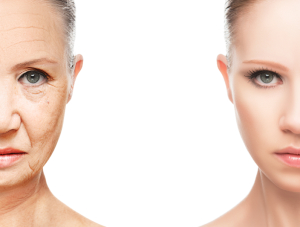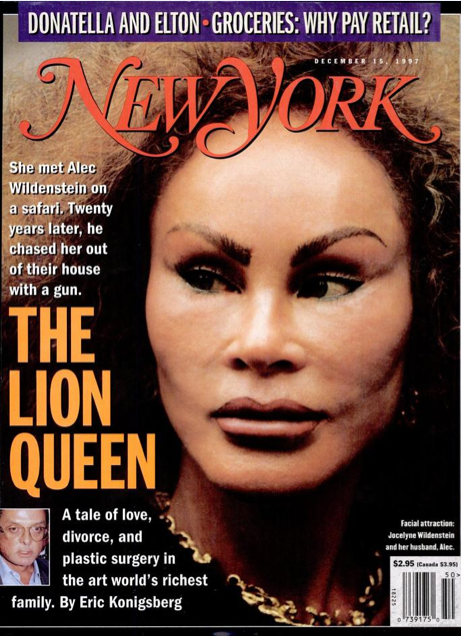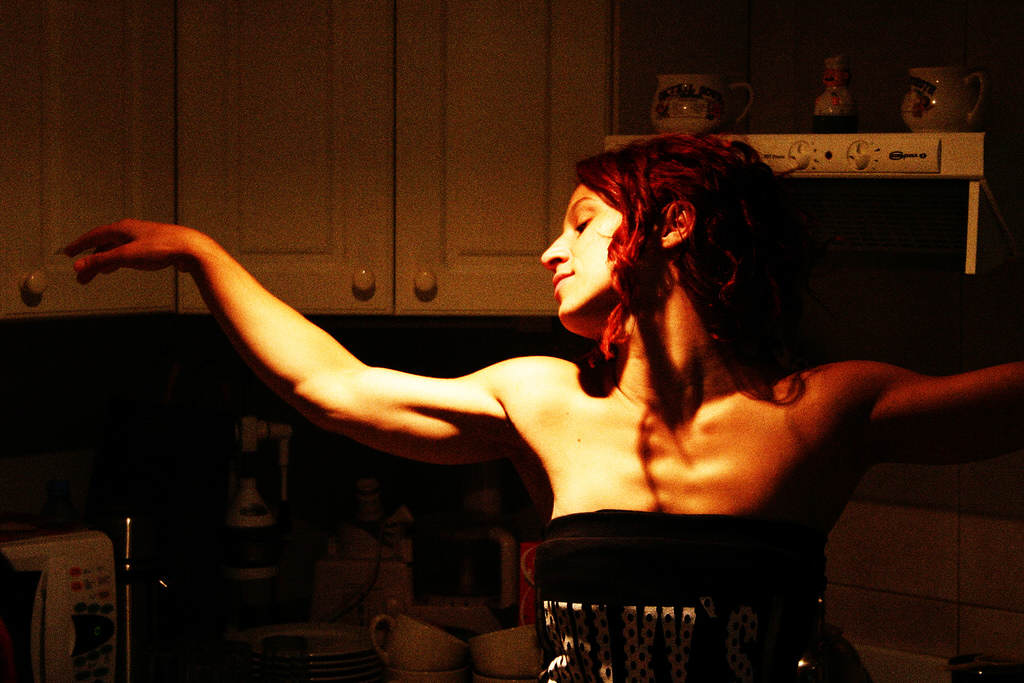Got your skin(care) in the game of life?
Aging skin. It’s worth an occasional sigh, right? After all, at the end of the day, unless you are spending major dollars on a few nips and a few tucks and some filler and peels, well, you have to give into it.
Or do you?
The American Academy of Dermatology has issued a few wonderful tips on taking care of your skin in your 40s and 50s. I thought that I would devote today’s post to things you can do to promote good skin care:
- Protect your skin from the sun. Oh, my goodness; this should be a given at any age. With the surge in products to provide a healthy glow, there is absolutely no reason not to wear sunscreen and every reason to wear sunscreen. And as the AAD points out, protection against the sun is the formation of any skincare plan. The strategy is simple: try to avoid direct sunlight between the hours of 10 am and 2 pm, especially if your shadow looks shorter than you. Wear hats and definitely wear shades. And of course, wear a sunscreen product for the broadest protection possible. Personally, I use EltaMD UV Daily Broad Spectrum during the daytime, which my dermatologist specifically recommended for my skin type.
- Apply moisturizer daily. Oil production in the skin starts to decline around age 40 so moisturizing becomes ever more important thereafter. Many physicians say that the best time to moisturize is right after a shower or bath. Your choice of a moisturizing cream depends on your skin type, your problem areas and your individual make up. I have a mild form of rosacea and consequently, can’t use a lot of products without breaking out. Speak to a dermatologist if you have any questions about what you should use. And be mindful that your product choice may change over time.
- Wash away dirt and grime only twice a day. Did you know that your face washing habits actually affect your appearance? That’s why it’s best to wash with warm (not hot) water and use a mild cleanser in lieu of soap, which can be too harsh as skin begins to thin and lose elasticity. You should also avoid scrubbing too hard, especially if you are acne-prone. Many women experience acne during perimenopause and use and overuse of antiacne cleansers can be irritating. Rather, look for products that are non-comedogenic, nonacnegenic or oil-free.
- Stop smoking. I can’t emphasize this enough. Studies have suggested that tobacco smoke can lead to smoker’s face due to its effect on mast cells (cells that play an important role in fighting allergies and inflammation). Think of the Marlboro Man – rugged looks, i.e. dull and dry complexion, loss of skin firmness, premature lines and wrinkles may look sexy on a 30 year old but by the time you reach your 40s or 50s? Forgeddaboutit!
- Get enough sleep. Oy! This one is tough, especially during menopause. But sleep deprivation can affect the ability of the body (and the skin) to renew itself. Beauty rest? Indeed!
- Finally eat healthy foods and drink plenty of water. The AAD says that a healthy diet filled with fruits, vegs, lean proteins and healthy fats is an important key to healthy skin. And, data suggest that diet can affect multiple skin conditions other than aging, including acne, psoriasis and dermatitis.
Should we be banning plastic?
Bet that you think this is a piece about going green. It’s not.
Does anyone remember the scandalous New York socialite Joycelyn Wildenstein and her obsession with endless plastic surgery in an attempt to look like a wild cat? I still recall when I received the issue of New York magazine that had her as the cover; honestly, I thought it was a promotion for the musical Cats or the Lion King.
Check this out:
And this is the before and after shot:
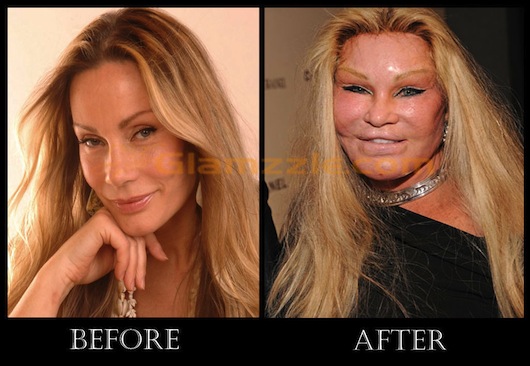
What we are seeing is a side effect of society’s obsession with youth. Poor Joycelyn -she was once a gorgeous woman. Now, she is simply a wealthy woman with more plastic on her face than a landfill.
The reason that I am focusing on this today is that I was up in NYC over the weekend visiting with friends. I managed to catch the preview of ‘It’s Only a Play,’ featuring among other notables, the brilliant Stockard Channing.
This is what Stockard used to look like:
Beautiful, talented, a picture of aging well. Perhaps she has had a few things done here but she looked natural.
This is the Stockard I saw on Saturday:
Both my friend and I were stunned when she walked onstage for her first line.
And then, we went to dinner, where four couples, clearly old, old friends, were meeting for dinner. Several of the women were sporting almost as much plastic as Jocelyn and Stockard. And it showed.
According to 2013 statistics from the American Society for Aesthetic Plastic Surgery:
- Over 11 million surgical and nonsurgical cosmetic procedures were performed in the United States. Since 1997, there has been a 279% increase in the total number of cosmetic procedures.
- Women has more than 10.3 million procedures, accounting for almost 91% of the total. These include breast augmentation, liposuction, tummy tucks, breast lifts and eyelid surgery.
- 42% of the procedures were done in people between the ages of 35 and 50, while people between the agers of 51 and 64 accounted for 30% of the procedures.
- The total bill exceeds $12 billion.
- The use of injectables — botox and fillers — saw an increase of 21% in 2013.
What has happened to aging gracefully?
I am a true believer in feeling good and looking good and if a few injections or a nip here and a tuck there makes you feel better, go for it! But when we become so obsessed that it becomes an addiction, when as a society, we are spending tens of billions of dollars on looking differently rather than seeing differently, it implies that our priorities are a dollar short and a day late. Unfortunately, I spent more time astonished by Stockard’s new face than by her performance. We even googled her image at intermission to see if it was make up to accentuate her character’s flaws. Rather, it was plastic that accentuated her surgeon’s character flaws.
I find that sad. I find it even sadder that the obsession with selfies has translated into a growing demand for procedures that are focused on a younger clientele. Indeed, surgeons are reporting that growing numbers of people under the age of 18 are having surgery done. Considered by some physicians as ‘hyper-vanity,’ the increase apparently reflects an increasing obsession with how peers and followers view young women among various social platforms; if you want to grow your following, focus on your looks — pouty lips, booties and cleavage.
While the media focus has primarily been on celebrity clientele, social media is changing the mirror reflection and it’s not a pretty sight, especially when rejuvenation is hitting the under 18 set. Oxymoron, anyone?
The brilliant Joan Rivers (R.I.P) was quoted as saying that she has had so much plastic surgery that when she died, they would be donating her body to Tupperware.
Is it time to ban plastic?
Read More
Got skin in the game of life? You best take care of it!
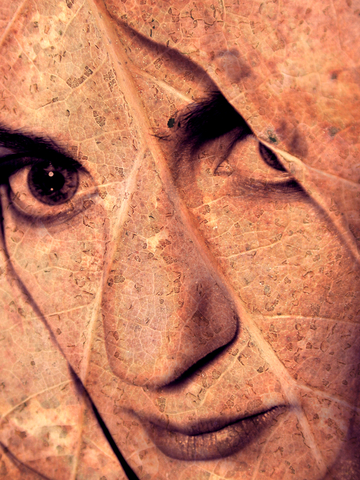 When it comes to health, many of us neglect our skin. But think about it: its protection allows us to function and when it is well cared for and it allows our inner beauty to shine through. And yet, few of us think beyond the obvious appearance issues to the fact that the effects of aging on skin can lead to certain dermatological conditions that cause illness and even death. Researchers say that in the U.S., a majority of people over the age of 65 have at least one skin disorder; in the UK, 70% of older people experience skin conditions, many of which are preventable.
When it comes to health, many of us neglect our skin. But think about it: its protection allows us to function and when it is well cared for and it allows our inner beauty to shine through. And yet, few of us think beyond the obvious appearance issues to the fact that the effects of aging on skin can lead to certain dermatological conditions that cause illness and even death. Researchers say that in the U.S., a majority of people over the age of 65 have at least one skin disorder; in the UK, 70% of older people experience skin conditions, many of which are preventable.
Guess what? I’m not simply talking skin cancer. Rather, I’m referring to dry skin, inflammatory eczema on the lower extremities, pressure ulcers (when an area of the skin breaks down due to pressure placed on it) tears, wounds itching and an increased bacterial and fungal infections.
The environment: Some of the challenges that we face are directly related to the environment. Factors like air pollution, smoking and of course, regular exposure to UV radiation can lead to deep wrinkles, age spots, and leathery appearance. The message is simple, if not obvious: don’t smoke, wear sunscreen and try to minimize regular exposure to smog infested cities (of course, the latter cannot always be avoided).
Physical factors: A condition known as xerosis cutis i.e. abnormally dry skin, occurs in up to 85% of older adults. It is related to a decline in skin fats and reduced secretion of sebum — the oily, waxy matter that is secreted to keep the skin lubricated and waterproofed. When the skin is abnormally dry, it can increase the inclination to itch and scratch, with in turn, may breakdown the skin and cause wounds and infections. Although there is little that can be done to avoid some of the natural processes of aging, it’s critical to avoid overwashing with soaps and detergents, both of which can remove grease from the skin and lead to scaling and itching. Importantly, air condition and heating. which dry out the air, can exacerbate dry skin and while humidity is uncomfortable, it’s critical. During winter, hydrate the air by running a humidifier. Regular use of emollient-rich creams and moisturizers, like Aveeno or Roc or Nivea can also ward off the time effects of dry skin. Be sure to read the label of popular moisturizers to insure that they contain humectants, which help draw water to the skin.
Another important consideration is the physical integrity of the skin and the way that the skin remodels itself as we age, increasing the predisposition to tears, wounds and pressure ulcers. Unfortunately, science has not caught up with the natural aging process and there isn’t a lot of strong evidence to support one strategy over another. There is indication, however, that knowing your risk before being exposed to situations that might cause pressure ulcers (e.g. bed rest) can help to insure that you take steps before they happen. Avoid rigorous scrubbing of the skin, especially over the bonier areas, as this can increase the risk of later problems. Treat stress incontinence or overactive bladder now, before it regularly exposes the skin to moisture that again, can cause problems down the line. And that eight glasses of water rule? It my actually help your skin in the long run – hydration is key! Avoid too much caffeine and insure that you are eating fruits and veggies with high water contents, like melon, tomatoes and lettuce.
An additional solution may be the use of 0.4% topical retinoids. Research has shown that retinoids can make skin look ‘more youthful, ‘ and may even increase the ability of polysaccharides to retain water in the outer skin layer and promote the production of collagen, which keeps the skin elastic. Additionally, some studies have shown that prolonged use of topical retinoids may improve the skin’s matrix, making it less susceptible to injury and pressure ulcers.
The bottom line is that our skin deserves a lot more attention than we give it and engaging in protective strategies now may result in a payoff later in life. Basic skincare is essential. There is no panacea but taking the appropriate steps will keep your skin the game of life longer.
Read More
Guyside: A few simple tasks — no crunches required
 If you (and I DO NOT recommend it) judged what male health was all about by looking at popular culture, I think it could be summed up in one word: abs. Walk past a magazine rack and it’s all abs, all the time. But there’s a lot more to it than that.
If you (and I DO NOT recommend it) judged what male health was all about by looking at popular culture, I think it could be summed up in one word: abs. Walk past a magazine rack and it’s all abs, all the time. But there’s a lot more to it than that.
When it comes to health, we men can be our own worst enemy. According to the US government’s Medline, men are more likely to smoke, to drink, to ignore symptoms, to put off health care visits, and to make risky health choices. So today, a few simple tasks to get you back on track if you’ve strayed.
#1: The next few times you’re at a pharmacy, use the automated blood pressure checker. If it’s high compared to the guidelines printed on the machine, DON’T ignore it. Follow up.
#2: Get a cholesterol check. This is especially important if you have a history of heart disease, but it’s a good idea for everyone.
#3: If you’re getting drunk regularly, slow down. Binge drinking isn’t good for anything and it’s pretty bad for your health.
#4: This is a tough one for a lot of guys. Colon Cancer. At its least invasive, you do one of those smear your poo on a stick and then on a test strip thing. Gross, but not too bad. The finger’s next. Sigmoidscopy and colonoscopy are the final frontiers, so to speak. I am a little squeamish about stuff related to the old intestinal system, but you know what? SUCK IT UP. It’s important.
#5: if you’re smoking? Stop. There’s nothing good for you there.
And the final tip: to borrow from the Homeland Security stuff, if you see something, say something. When I got diagnosed with bladder cancer, it was because I acted when I saw blood in my urine. If you see something abnormal related to your body, take action.
It’s easy to buy into the old lie that you’re invulnerable, that you haven’t changed since high school, even when you’re buckling your belt on a new hole and your hair is disappearing. And if it helps you in your job or your personal life to tell yourself that story, that’s fine. But when it comes to your health, holding to closely to the convenient delusion could be a life-threatening decision. Don’t do it.
Image: Creative-commons licenced from Flickr user Ed and Eddie.
Read MoreOn Why We Need to Reclaim Realism
In an article from TIME magazine last year, Virginia Postrel writes about The Twisted Allure of Jihadi Glory. While it features the outcry over the Rolling Stone cover featuring Boston bomber Dzokhar Tsarnaev, it poses a bigger picture question on the power of glamourization.
Postrel shares a quote from novelist Salman Rushdie, no stranger to controversy himself as the author of the 1988 novel, The Satanic Verses. Asked about what motivates suicide bombers, Rushdie’s answer is illuminating:
Terror is glamour – not only, but also. [Terrorists] are influenced by the misdirected image of a kind of magic… The suicide bomber’s imagination leads him to believe in a brilliant act of heroism, when in fact he is simply blowing himself up pointlessly and taking other people’s lives.
As Postrel shares in her piece, Rushdie hits the nail on the head when it comes to how glamourizing something offers an incentive to act upon, to increase the perception of who we are and how we act, which made me think of how glamour warps our everyday lives.
The Power of Glamour
You can go back to virtually any point in history, and you’ll find countless examples of glamourizing something that was anything but.
In her piece, Postrel talks about martial glamour – or how war seemed glamourous to those that would follow in their leader’s footsteps. She talks about Achilles from ancient Greece, but you could also look to the poem The Charge of the Light Brigade, by Alfred Tennyson, to see how war was glamourized.
Forward, the Light Brigade!
Was there a man dismay’d?
Not tho’ the soldier knew
Someone had blunder’d:
Theirs not to make reply,
Theirs not to reason why,
Theirs but to do and die:
Into the valley of Death
Rode the six hundred
When can their glory fade?
O the wild charge they made!
All the world wondered.
Honor the charge they made,
Honor the Light Brigade,
Noble six hundred.
Until the First World War and its huge loss of life, war was seen as a heroic endeavour. Today, we think differently – and yet, as Postrel’s piece shows, some of us don’t.
This is the problem with glamourization – how do we reel in what we encourage blithely?
The Persuasion of Hope
Marketers and brand advertisers have been using glamour in a bid to create desire and action within their target audience for years.
Think back to the black and white movies of the 40’s, where the movie stars of yesteryear would happily smoke on-screen and be regarded as sexy and sophisticated for it. Today, we know the dangers of smoking – just over 70 years ago, it was actively encouraged.
Or look at the success of magazines like Vogue and Elle, that portray perfect women that rarely reflect society’s real women and their various shapes, sizes and lifestyles.
These examples, and others like them, build on the desire of their audience(s) to be more like the actors on screen or the models on the page, as opposed to being happy with who they are.
By tapping into this powerful hope, or desire, brands use the power of persuasion that people need to be something they’re not in order to be valued.
As Postrel shares in the TIME article, that value can come from making powerless people feel significant. In advertising and marketing, that value can come from answering the “if only” question.
- If only I had a better job;
- If only my car was as cool as my neighbours;
- If only I could look good in that tiny bikini;
- If only. If only.
The problem is, even those we aspire to be like aren’t perfect. Magazines take perfectly good-looking people and airbrush them to an even higher plane of “perfection”. Movies use focus filters and post-production effects to showcase their stars in the best light.
By creating an unrealistic desire, we’ve created a culture of hope that can never be met – at least, not until the next campaign where we can start it all over again.
Realism and Reclamation
The problem, of course, is that to deny hope, we deny growth and our future selves. Why shouldn’t we want to reach for something we don’t have, or be like someone we admire?
The thing is, we don’t need to deny ourselves. We should do all these things, and more. But we should do it realistically.
We need to stop promoting the idea that unrealistic imagery is the norm. Individually and in a wider context, we need to understand that glamour is only a facade of what realism truly is. To continue to glamourize our perfect selves doesn’t help us grow – it merely stunts us, and that benefits no-one.
It’s not as if we need to play the glamour card, either.
- The Dove Campaign for Real Beauty has won widespread praise for the way it showcases the beauty of women in all their natural sizes;
- UK retail chain Debenhams has invoked a ban on airbrushing models for their promotional materials;
- Lifestyle magazines like Cosmopolitan are calling for clothes manufacturers to stop the obsession with unrealistic sizes.
These are important steps from the types of companies on the front line that can truly initiate a different way of thinking. But they’re just the first steps.
As marketers, we need to be able to instil desire without taking the lazy way out. As businesses, we need to be more realistic on who our target audiences are and what they really feel, and need.
More importantly, as men – in marketing, advertising and plain old life – we need to look at women the same way we do each other. After all, when was the last time you saw a guy photoshopped to the Nth degree to present a false idea of sexiness to women?
Hopes and dreams are one thing. Selling hopes and dreams is another, and it’s the latter that can make the biggest leap to connecting the two together.
It’s time to see who’s up to the challenge.
image: Julian Rodriguez Orihuela
Read MoreAging & the double standard
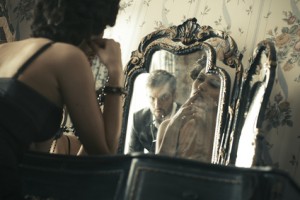 Yesterday, a Facebook colleague posted a link to a Huff Post article that left me floored. Entitled “My Naked Truth,” writer Robin Korth discusses a recent relationship in which the man she was seeing, just 4 years shy of her 59 years, told her that he could not deal with her ‘wrinkly body’ and requested that she ‘hide’ in order to continue a sexual relationship. When she informed him that she no longer want to see him, he was both stunned and confused.
Yesterday, a Facebook colleague posted a link to a Huff Post article that left me floored. Entitled “My Naked Truth,” writer Robin Korth discusses a recent relationship in which the man she was seeing, just 4 years shy of her 59 years, told her that he could not deal with her ‘wrinkly body’ and requested that she ‘hide’ in order to continue a sexual relationship. When she informed him that she no longer want to see him, he was both stunned and confused.
I would like to say that I have no words but it’s simply untrue. I have many words, most of which are unprintable. However, the piece provided the courage for me to openly share my recent experience on a dating site. I’ve been mired in work for the past half decade and have been running from the disappointment and hurt from my last relationship; in other words, I’ve not been seeing anyone nor have I had any interest in putting myself back out in the game. But this Spring brought a shift in priorities and in my life and with an open heart and halfway open mind, I decided that the time was now to have fun with a new man.
I have male friends in my life who constantly tell me that I am pretty; some go as far to claim that I am ‘hot,’ or ‘sexy.’ Those compliments are truly lovely. And yet, my foray into the world of online dating only brought to fore everything that is wrong with the way that many men my age consider women and how they consider themselves in relation to the partners they go after. For the most part — like Dave in Robin Korth’s piece — the men that I encountered seem to have blinders on. Mind you, I know a lot of men who are as self-deprecating about their aging looks as women are, but for every single one of these guys, I also know at least two who are clueless. The latter go after women half their age or at the very least, 10 years younger. And while I can certainly understand the attraction of supple skin, perky breasts and flawless, cellulite-free derrieres, I can also see what apparently they don’t see in themselves: sagging guts and receding hairlines. In my recent ‘dating’ foray, I was contacted by countless men who ignored what I wrote that I was seeking, men a good 10 years or more older than me, inactive men, men who, based on their notes, were short a few neurons in the intellect department. I received emails saying little more than how much my hair and eyes were appreciated. For all intents and purposes, I was rewarded with superficial, icing but no cake, whipped cream and nothing more. Needless to say, I promptly took down the profile.
When does the double-standard start and end? We live in a country where there are weekly reports of high school or college athletes raping women, where insurance companies pay for men with erectile issues to get their hard(s)-on, where a women turns 50 and becomes invisible and where men of the very same age, men with big guts and lousy postures who get winded walking up a few stairs somehow become more attractive — at least to the few who, in the majority of cases, are only interested in their money and cache. Or, as Korth writes, men can’t deal with our bodies unless we are in the dark draped in protective gear that sucks in our flaws and also our souls in the process.
So, floored? Yes, and angry and absolutely puzzled how this happens and why many women continue to lead their lives counting wrinkles and flaws and opportunities that have dried up. And I am heartened by women like Korth who are willing to share their stories and still claim their bodies for what they are: wrinkled but beautiful, flawed but strong, every “imperfection a badge of living and giving of life.”
Here’s the rub, my rub: I liked the way I looked a lot better six years ago and was hardly as self critical as I am now. And, at the age of 53, I find lots of flaws; this despite working out daily and engaging in other physical activity. Time to end the double-standard. I think I’ll start right now. What about you?
Read More






